The transgressive art of William Friedkin
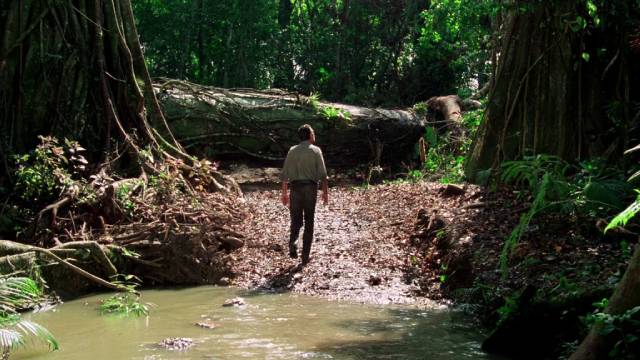
William Friedkin, who began directing for television in the early 1960s, continued to work until shortly before his death in August at the age of 87. But his most significant work – in terms of popular and critical success, and cultural impact – was a remarkable string of films made in the ’70s. After a decade of television work (much of it documentary) and a handful of features which didn’t initially reveal a particular directorial identity – the first was an episodic comedy called Good Times (1967), starring Sonny and Cher; followed by an adaptation of Harold Pinter’s The Birthday Party (1968), the period comedy The Night They Raided Minsky’s (also 1968), and an adaptation of Mart Crowley’s ground-breaking gay play The Boys in The Band (1970) – Friedkin hit it big with The French Connection (1971), followed by The Exorcist (1973), a pair of movies which pushed the boundaries of what was acceptable in the mainstream after the disruptions of the ’60s transformed the business.
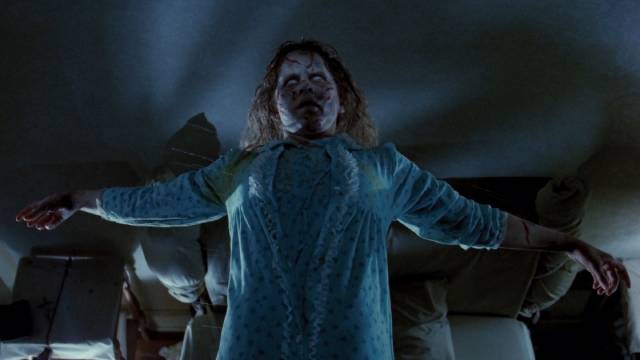
Ironically, his best film, Sorcerer (1977), was seen as a misstep, a critical and commercial failure which only began to be recognized decades later as a masterpiece. This was followed three years later with Cruising (1980), a movie which was so controversial that again its distinctive qualities weren’t immediately recognized. Over the next forty years, his work seemed to be all over the place – music videos, comedies, horror, episodic television, documentaries, an erotic thriller, more crime and adaptations of plays. I admit I haven’t seen a lot of this later work, but hopefully I’ll get an opportunity to see his final film, an adaptation of Herman Wouk’s play The Caine Mutiny Court-Martial, which just debuted at this year’s Venice Film Festival at the beginning of September and apparently will go directly to streaming in October.
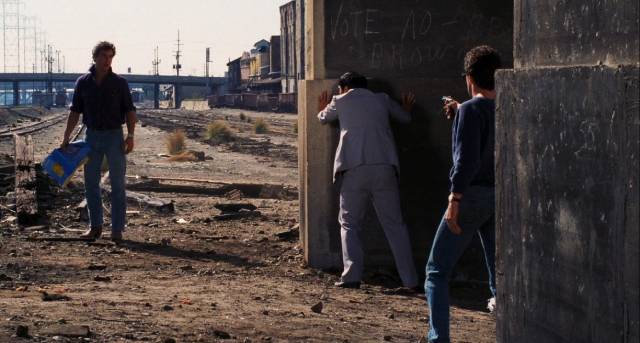
I hadn’t given much thought to Friedkin in a while, but after his death on August 7, I decided to revisit his major films, those that I have in my collection anyway, watching five in chronological order over a period of a few days. What was immediately apparent was that he was very much a filmmaker rooted in that specific transitional time when the influence of the big studios was in decline and the constraints of self-imposed censorship had been loosened during the second half of the ’60s. By the end of the decade, it seemed that almost anything would be allowed, not only in terms of sex and violence, but also in a broader pushing against social taboos, something which obviously appealed to Friedkin, though his efforts initially met with very mixed reviews.
*
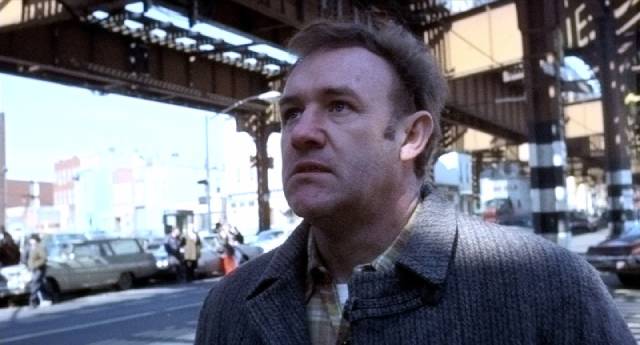
The French Connection (1971)
Then came The French Connection, which couched its transgressions in the familiar terms of a thriller, shot with a raw documentary-inflected style. Visceral, visually dynamic, cynical and violent, this (along with Don Siegel’s Dirty Harry, released just two months later) decisively transformed the screen image of cops by depicting them as flawed people forced to break the rules to stem a seemingly unstoppable tide of criminality (a revisionist view soon being interrogated by filmmakers such as Sidney Lumet, in movies like Serpico [1973], The Offence [1972] and Prince of the City [1981]). These representatives of the law had no choice but to break the law to protect society from its own indecisive weakness in the face of evil. But while Siegel’s movie has a pulpy West Coast B-movie aura, Friedkin’s projects an air of gritty realism – both films garnered conflicted reviews from critics troubled by the apparent validation of cops breaking the rules, but The French Connection won multiple awards (including five Oscars) for its persuasive argument that it was depicting the world just as it was.
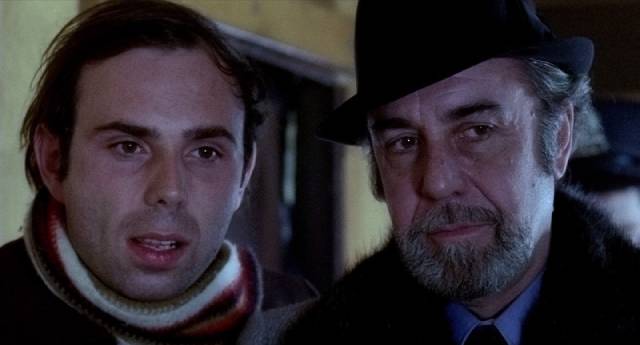
This was a function of the cast’s raw performances as much as Owen Roizman’s cinematography, which seemed to be grabbing the action as it happened rather than recording staged scenes. Ragged, frequently hand-held, mostly using available light in both exteriors and interiors, the grainy, deliberately artless imagery convinces us that Popeye Doyle’s brutal methods are essential as he tracks the smoothly polished French drug dealer dubbed Frog One (Fernando Rey). Here, angry working-class America is opposing European decadence which is corrupting the nation. It’s not entirely clear that the ironic juxtaposition of the bad guy’s class with the good guy’s crudity is fully intentional, but Doyle’s obsession with stopping the foreigner becomes increasingly ambiguous until the film reaches a kind of dead end, its final moment unresolved in a way which would have been unthinkable even a few years earlier.
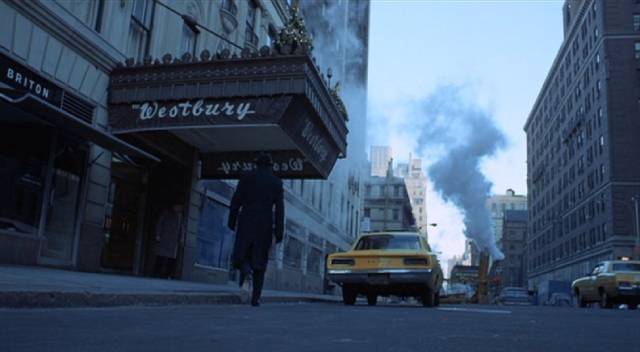
While the filmmaking – camerawork, editing, music, performances – are exhilarating in a way which seems new and revelatory, The French Connection establishes what subsequently appears to be Friedkin’s clearest directorial signature: a detachment, a withholding of judgment, the impression that he is simply observing the world as it is and leaving the audience to draw their own conclusions. It’s an interesting trick because he’s actually using a whole arsenal of techniques to sweep that audience along from moment to moment. While the tone seems objective, we’re being carried in a particular direction, suggesting that he wants us to end up in a particular place, even though he withholds his own thoughts about just what that place is and what it might mean.
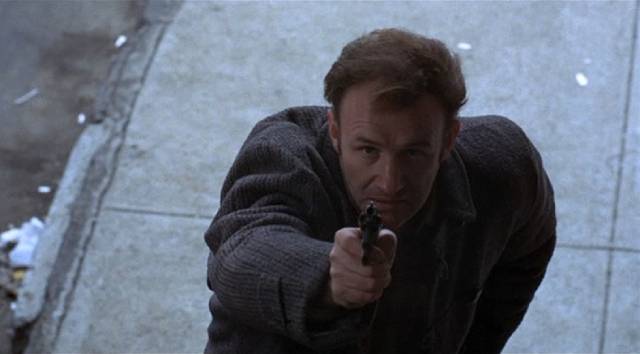
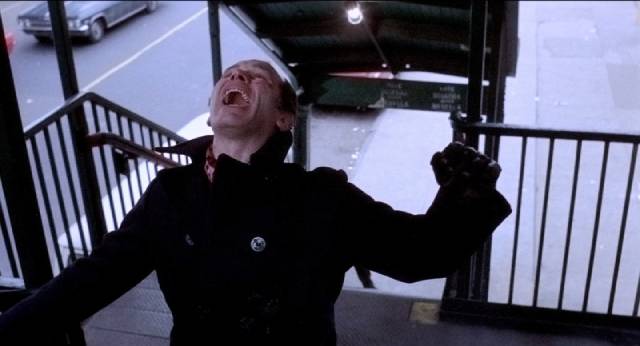
The famous car chase might stand in for the whole. Popeye commandeers a car to pursue the French hitman (Marcel Bozzuffi) who escapes him on the el. Reputedly, the sequence was shot without permits on unsecured streets, which given the close calls and dangerous driving seems plausible; the tension and excitement are palpable, triggering a rush of adrenaline which makes us accept without introspection the climactic moment in which Popeye shoots his quarry in the back. It’s all so fast, so seemingly inevitable that we don’t question in the moment what’s happening, though in retrospect Popeye’s actions are incredibly irresponsible, his fixation on his target putting a large number of civilians at serious risk.
*
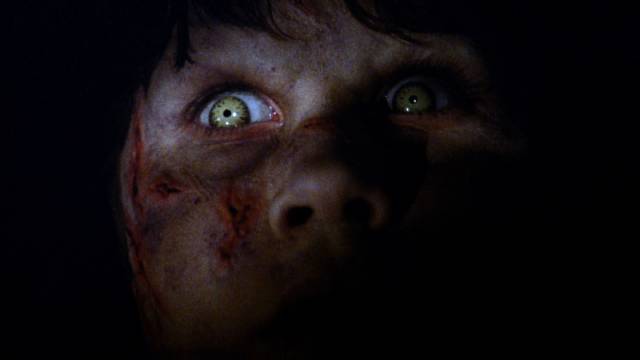
The Exorcist (1973)
Friedkin’s stance of merely being an observer, offering no interpretation or opinion, carries through much of his subsequent work. It’s certainly what makes The Exorcist stand out from the mainstream of the horror genre. He famously asserted that he didn’t consider it a horror film at all, and while that kind of thing is often little more than an annoying pretension coming from people who need to assert their condescension towards a genre to which they feel superior, in Friedkin’s case we might take it at face value. Once again, the film seems to approach its subject with documentary detachment, treating possession as if it’s something real and following wherever it leads.
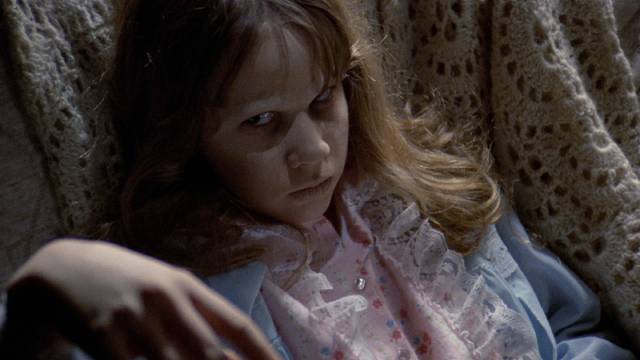
When I first saw the film in February 1974, this was actually a stumbling block. Demonic possession seems such an absurd concept that the seriousness with which the film approaches it struck me as ridiculous. I felt the urge to laugh as people around me in the packed theatre worked themselves up into such a state that they’d scream at almost anything Friedkin threw at them. It took me years to come round to an appreciation of the craft he brought to the project. But no matter how many times I’ve seen it, admiring the careful construction which leads step by step to its conclusion that the supernatural is undeniably real, I can’t get past the absurdity – paradoxically, the seriousness of Friedkin’s approach got in the way of my enjoyment, while lesser, perhaps sillier movies remain more engaging. It’s so much easier to suspend disbelief watching something like The Omen (1976), a much less well-crafted movie, because it doesn’t expect me to take it seriously; it’s pulp fantasy, not a seemingly serious drama which posits the reality of all the religious claptrap.
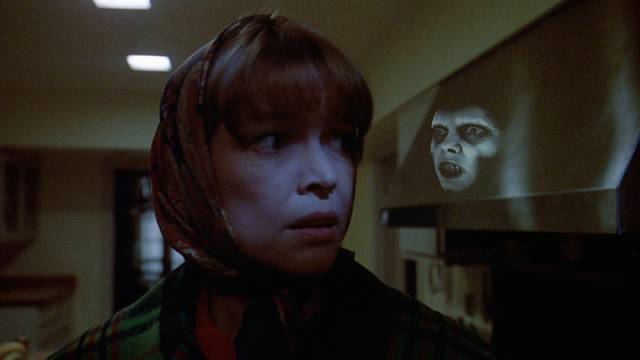
As drama, although Friedkin again seems to withhold any judgment, The Exorcist seems problematic in its (not surprisingly) regressive qualities. These arise from its taking the tenets of Catholicism so seriously. If the Devil is real and can only be countered by the power of God, then certain things inevitably follow. In this story, based on William Peter Blatty’s best-selling novel which in turn was supposedly based on a “real” case of possession in the ’40s, the upheavals of the ’60s are the result not of a valid questioning of problematic social issues – the Vietnam War, racial, economic and gender inequalities – but rather of an abandoning of timeless certainties.
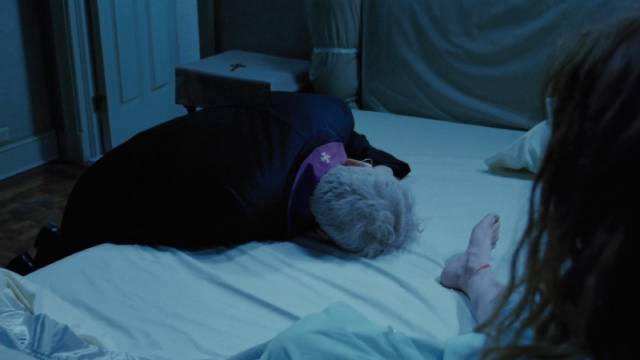
Specifically, the horror begins with a broken marriage and an independent woman following a successful career which has brought her money and fame, which the film suggests has driven away and alienated the father of her adolescent daughter. This fracturing of the family has opened a door through which evil sneaks in. Or rather, the film interprets the girl’s response to her parents’ break-up not as an acting out of psychological stress, but rather as a manifestation of literal evil. In a century which saw several genocides and two world wars, we are asked to believe that true evil is a pubescent girl swearing at adults and manifesting sexuality in a troubled way. Yes, true evil is female sexuality and independence, requiring the institutional power of the Church to reassert male authority and restore order and stability.
But despite the offensively regressive theme, on a dramatic level, moment by moment, The Exorcist is very effective and, along with Rosemary’s Baby and Night of the Living Dead (both 1968), it helped to transform the horror genre from something generally considered to be kids’ entertainment into a vehicle for exploring more adult material.
*
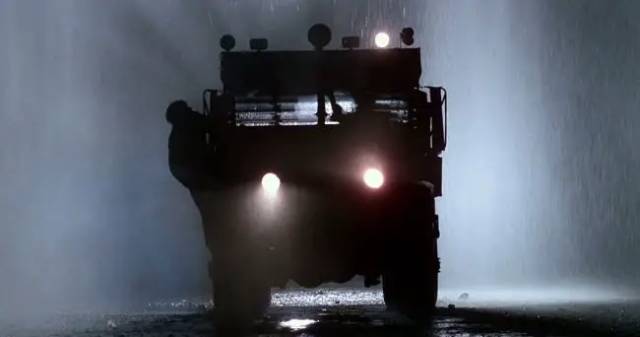
Sorcerer (1977)
The title The French Connection reflected not just the narrative – a New York cop tracking a French drug dealer – but also Friedkin’s own affinity with French culture and the New Wave (in fact, he was married to Jeanne Moreau for two years in the late ’70s). This was made very clear when, as his follow-up to The Exorcist, he chose to remake and update Henri-Georges Clouzot’s The Wages of Fear (1953). It was an interesting choice, but in some key ways it didn’t serve Friedkin’s career well, although it resulted in the best film he ever made. For some critics, already wary of the filmmaker after his two previous hits, this was an act of hubris, a young American director’s arrogant appropriation of an acknowledged foreign classic. From a commercial point of view, Friedkin did make one big miscalculation – by naming the film Sorcerer, he created an expectation that it would be a horror film on the lines of The Exorcist. Audiences were confused when they found themselves watching a gritty, gruelling adventure movie without a trace of the supernatural. Another nail in the commercial coffin was the unusual-for-the-time financing which came from two major studios, neither of which ultimately assumed the responsibility for promoting the film.
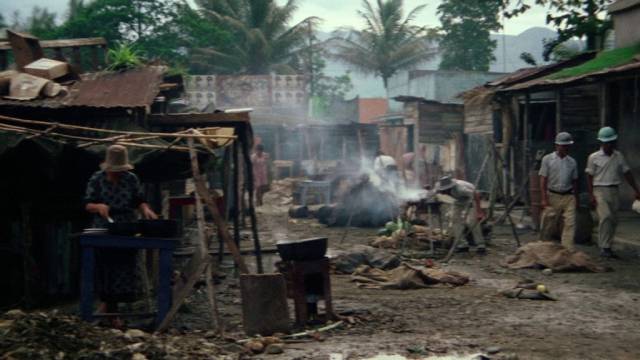
If this was indeed an act of hubris, Friedkin rose to the challenge and made a movie which is part homage to the French classic and part original interpretation of Georges Arnaud’s novel. Clouzot’s film begins with the characters already stuck in a small South American town, trapped and rotting away; we see their aimless, hopeless lives wasting away day by day until an oil well fire breaks out over the nearby mountains and four men volunteer to drive trucks carrying nitroglycerine over precarious roads in hope of earning a way out. In contrast, Friedkin introduces his four characters back in the world, each at a moment of crisis which terminates their lives and sends them into exile. At first glance, this risks devoting a substantial chunk of the movie to backstory, something irrelevant in Clouzot’s film. But there is purpose – each introductory narrative (well, three of the four) introduces the idea of fate as a fraught combination of poor decisions aggravated by chance, of lives at the mercy of contingency. When these men choose to risk their lives by driving those trucks, we understand that there are forces at work that will oppose them. While “Sorcerer” is the name painted on one of the trucks, in a larger sense the title refers to those forces, to an active and malevolent Fate which stands against human agency.
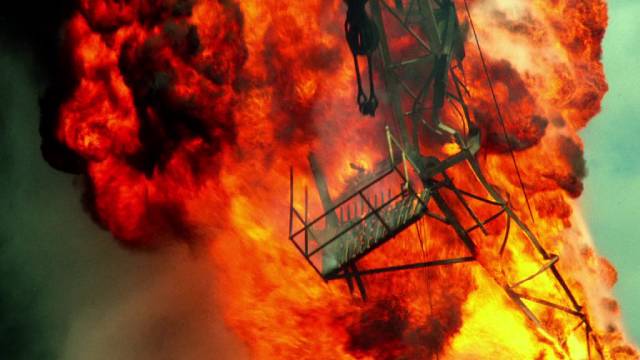
Having established the four characters – hitman Nilo (Francisco Rabal), Palestinian Kassem (Amidou), French businessman Victor Manzon (Bruno Cremer) and small-time New Jersey hood Scanlon (Roy Scheider) – Friedkin and scriptwriter Walon Green set up the hellish backwater where fate has brought them all, a place of poverty and hopelessness existing in the shadow of an American oil company which grinds up locals and expatriates in its relentless drive for profits. The oil well blows, the offer is made, and after testing the skills of many desperate men, the four are chosen and, halfway through the film, the journey begins.
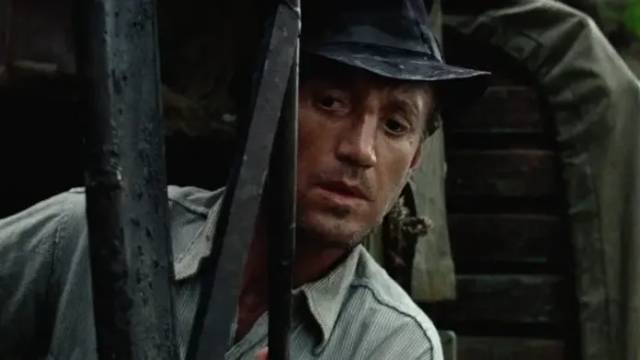
What follows is one of the most visceral, gruelling depictions of physical action in a mainstream movie. The time spent earlier establishing the characters allows Friedkin to dispense now with everything except their moment-to-moment actions and responses to obstacles, large and small, while small moments of connection and conflict arise naturally from the stress in which they’re immersed. And that stress is conveyed to the audience through some of the most impressive imagery of Friedkin’s career; real trucks move precariously over crumbling roads perched above deep ravines, with a palpable sense of physical danger. The impressive physicality of the film reaches its peak in the sequence in which the trucks have to cross a partially ruined rope bridge over a torrent during a rainstorm; again, we watch real trucks swaying and sliding over broken boards. Here, Friedkin’s dedication to creating a real situation which he then documents dispassionately pays off in almost unbearable tension.
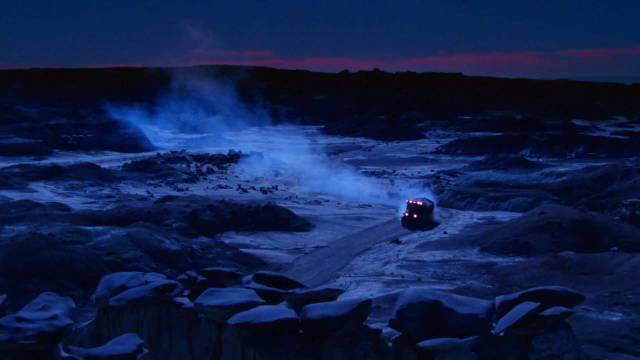
It seems almost incomprehensible that this masterpiece was a commercial failure, though the tension it creates is never really released with a compensatory burst of triumph. Only one of the four men survives the journey, but even that turns out to be illusory as Fate catches up with him despite his efforts. Perhaps by 1977 audiences which had been willing to accept bleak endings a few years earlier had grown tired of existential despair – after all, Sorcerer was released just a month after Star Wars.
*
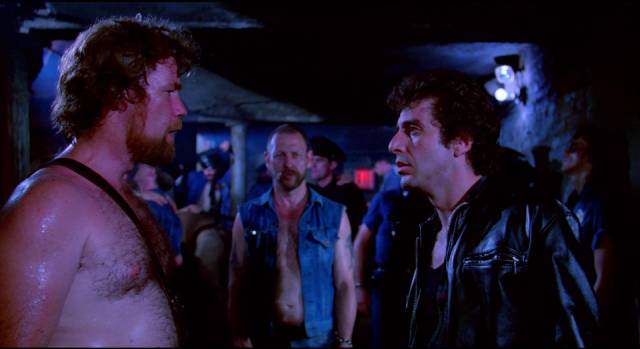
Cruising (1980)
After the gruelling experience of filming Sorcerer in the Dominican Republic (and Paris, Tel Aviv and New Jersey), Friedkin retreated to Boston for a comic heist movie based on an actual robbery in 1950. I have no real memory of The Brink’s Job (1978), not having seen it since its theatrical run, but the movie which followed it has stuck with me for a number of reasons, not least the controversy which surrounded it from the time the project was announced and escalated through production and eventual release. Perhaps more than any other Friedkin movie, Cruising represents his tendency to push boundaries while seeming to be almost naive about the impact his transgressions might have. In fact, he asserted that for him the movie was just a murder mystery with an interesting, largely unexplored setting – which is difficult not to take as anything but disingenuous.
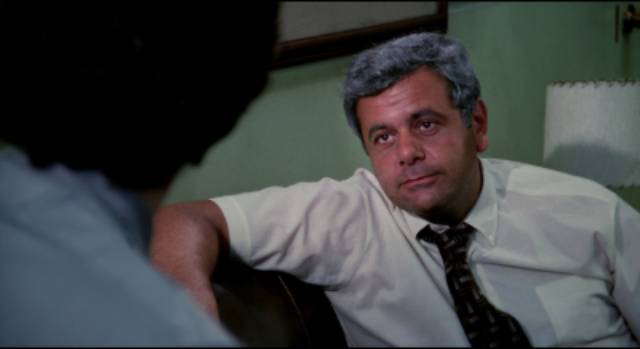
Based on a 1970 novel by New York Times reporter Gerald Walker, which in turn was based on an actual case in which a serial killer had targeted gay men, the film depicts in surprising detail the S&M subculture of leather bars. In fact, parts of the movie were shot almost like a documentary in various underground clubs populated by their actual patrons. Friedkin gives the milieu the same kind of raw authenticity he displayed in The French Connection, once again centring the narrative on a cop, although here patrolman Steve Burns (Al Pacino) is sincerely dedicated rather than cynical and violent, accepting a difficult undercover assignment because it promises to fast-track him to detective.
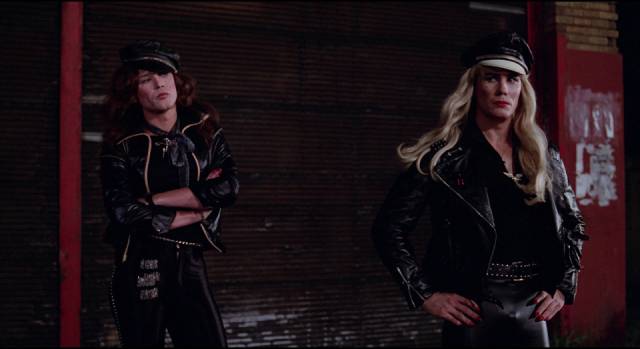
In Cruising, more than any of his other movies, Friedkin’s stance of detached interest caused problems. Initially, there was support for the production from the community being depicted, but even before shooting started there was backlash from the larger gay community, which felt that the focus on this particular sub-culture posed a threat to on-going efforts to normalize gays in the eyes of straight society. The story itself provided a strong hook for these objections because by its very nature it portrayed gays as victims of violence who perhaps brought these attacks on themselves by their transgressive behaviour. It didn’t seem to hold much weight at the time that the film argues that social disdain itself isolated the community and made It vulnerable to violent predators, that moralizing guardians of propriety were the reason gays were forced underground where there are few protections.
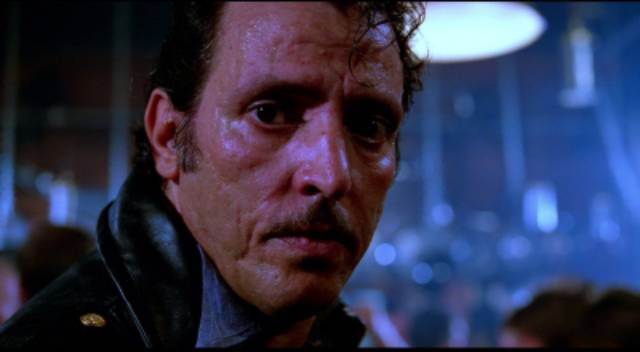
Within this narrative and sociological context, the story concerns Steve Burns’ struggle with his own identity as he immerses himself in the leather bar sub-culture. A regular – i.e. straight – guy who lives with his girlfriend Nancy (Karen Allen), he has no experience or understanding before he accepts the assignment from his boss Captain Edelson (Paul Sorvino); he can’t tell Nancy or anyone else what he’s doing or where he’s going, and disappears, taking an apartment in a more disreputable part of town and playing the part of a gay man. He has to learn the rules, how to dress, how to behave … and eases into the role by befriending his neighbour Ted Bailey (Don Scardino), a writer working on a romantic comedy play while his partner is away for out-of-town try-outs for a show. Steve finds himself drawn to Ted and eventually becomes protective when abusive partner Gregory (James Remar) returns.
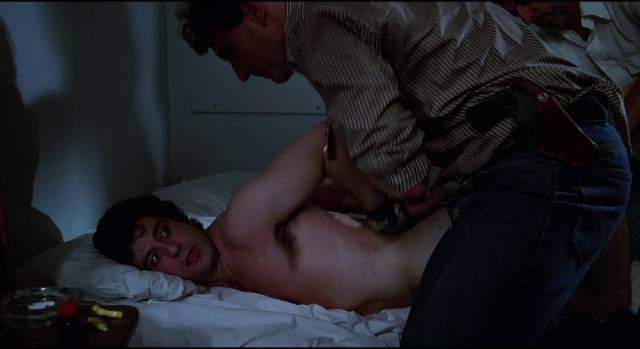
Meanwhile, Steve haunts the underground clubs, providing our entry point into S&M and its attendant public displays of sexuality, while the homicidal predator lures and kills more victims. When Steve comes to suspect a man named Skip Lee (Jay Acovone), cops on surveillance move in too quickly and Steve gets to experience police violence from the position of the victim – the cops themselves victimize members of the community with brutality (in fact, in an early sequence a couple of patrol car cops sexually assault a pair of male prostitutes who have no defence against their uniformed authority).
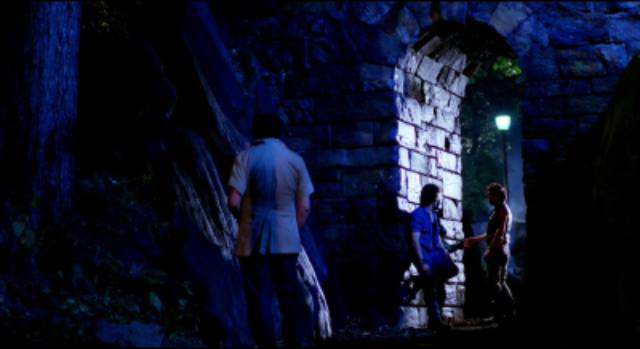
Eventually, it seems that Steve has identified the likely killer, a tormented man named Stuart Richards (Richard Cox), but Friedkin retains an air of ambiguity to the end by using multiple, not-quite-identifiable actors in the murder scenes (in fact, one actor plays the killer in one scene and the victim in another), establishing a generalized atmosphere of violence which eventually envelopes Steve, who becomes a killer himself. As with the ambiguous ending of The French Connection, Friedkin leaves the audience without a clear resolution – even though it appears that the killer has himself been killed there’s a new murder and an unidentifiable figure still haunts the underground clubs, while Steve is no longer certain of his own sexual identity.
Although Friedkin avoids stating a clear position on what he’s showing us and the graphic violence inflicted on gay bodies is disturbing, it seems reductive to claim as those early protests asserted that the film is homophobic. The world it shows is messy and complicated and along with the violence it contains empathy for the underground community and, perhaps most surprisingly for a mainstream production with a major star, suggests that sexuality is fluid and definitely not clearly defined as binary, which in light of the on-going culture war makes it prescient and well ahead of its time.
*
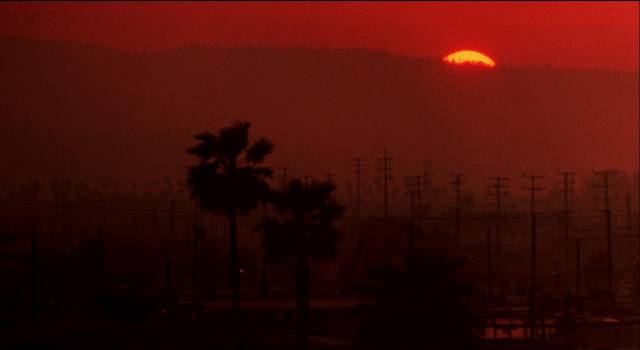
To Live and Die in L.A. (1985)
Somewhat battered by the controversy surrounding Cruising, Friedkin didn’t make another movie until three years later, and that was Deal of the Century (1983), a poorly received Chevy Chase comedy about illegal arms traffic. Then there were a couple of years of music videos and episodic television before what might be considered the final film of the run begun at the beginning of the ’70s. To Live and Die in L.A. (1985) is a kind of West Coast response to The French Connection, in which a Treasury agent determined to bring down a major counterfeiter takes increasingly illegal actions which blur the distinction between cop and criminal.
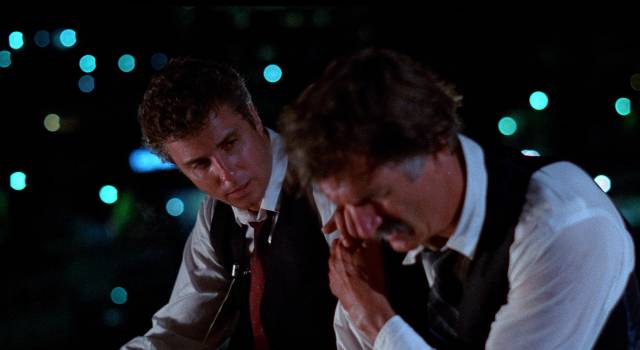
But there are notable stylistic differences between the films, which at least superficially seem to reflect the move from East to West. To Live and Die in L.A. lacks the gritty “realism” of The French Connection and plays much more like a “movie”. The visuals – shot by Robby Muller – are slicker and more stylized, with filters altering the colour values to make the city (and desert) more dreamlike. But the first sign that we’re in a different conceptual space is the early use of a glaring cliche, which is almost embarrassing in its audaciousness: protagonist Richard Chance (the name itself flagging Friedkin’s interest in contingency and Fate) has a close relationship with his mentor Jim Hart (Michael Greene), so when Hart is murdered three days before retirement the case becomes a matter of personal revenge for Chance. After an early bar scene during which we learn that Hart is due for imminent retirement, we know immediately that he’s going to die when he drives out alone to check an industrial building in the desert. This is pure movie shorthand, not the ragged play of “chance” which determines so much of the action in Friedkin’s earlier movies.
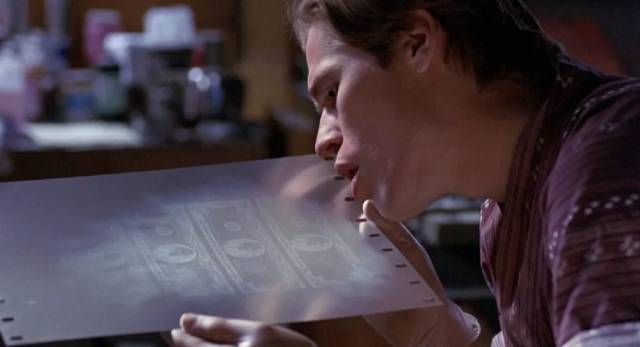
Hart is killed by a cold-blooded sociopath named Eric Masters (yet another symbolic name), an artist who is also a master counterfeiter whom Hart and Chance have been tracking. When Chance is assigned a new partner by his boss, Friedkin establishes two parallel conflicts – the primary one between agent and quarry, and a secondary one between the two agents. Chance gradually draws the straight arrow John Vukovich (John Pankow) into his increasingly illegal actions. The lines between law and crime, between morality and corruption, grow more hazy, leading to the film’s big set-piece in which Chance and Vukovich intercept a man arriving in town with what they’ve been told is a briefcase full of money, which they intend to steal in order to entrap Masters by buying a large quantity of counterfeit bills.
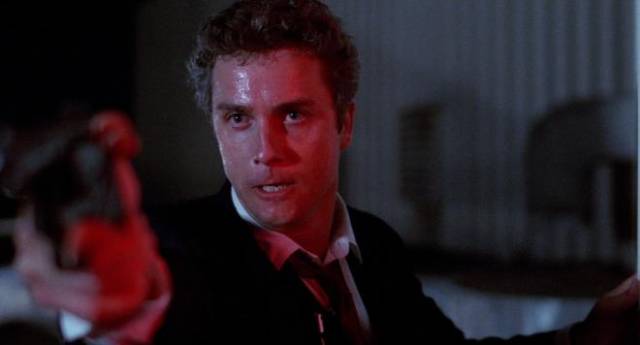
The plan goes wrong when heavily armed men turn up, the courier is killed, and they find themselves without the money and involved in a dangerous chase on the freeway. While the initial hijacking of the courier recaptures the visceral confusion of The French Connection, the highway chase has a generic movie quality quite unlike the raw action in the earlier film. In 1971, Friedkin was breaking new ground; fourteen years later, he’s following a well-trodden action movie track.
That air of familiarity hangs over the whole movie, even more so now than when the film was first released, because it bears a strong resemblance to the work of Michael Mann, who had made an impact a few years earlier with Thief (1981) and would use To Live and Die’s star William Petersen the next year in Manhunter (1986). Both Mann and Friedkin in these movies show the visual influence of music videos – MTV had launched in 1980 and quickly began to transform the way movies were being made in Hollywood. Mann had even followed Friedkin in using Tangerine Dream, who had created the groundbreaking electronic score for Sorcerer, in his first two features, Thief and The Keep (1983). For To Live and Die in L.A., Friedkin used British new wave band Wang Chung, adding to the music video ambience of the movie.
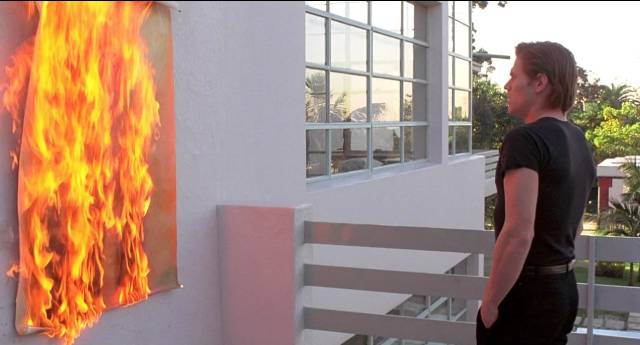
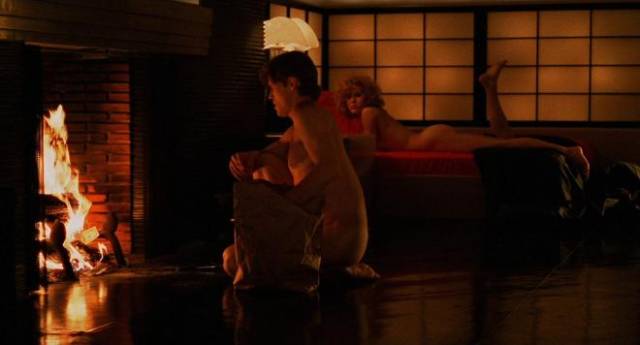
*
While the films of the ’70s seem transgressive and dangerous, by the mid-’80s, Friedkin gives the impression of having been absorbed into the mainstream, making music videos, working in television. To Live and Die in L.A. is a good thriller, with a lingering trace of ’70s cynicism, but it sits quite comfortably within what others were doing at the time. I haven’t seen the feature which followed, Rampage (1987) – which from what I’ve read argues in favour of the death penalty – but the one after that is pretty dire: The Guardian (1990) may have been an attempt to recapture some of the impact of The Exorcist, but it looks very much like a mediocre made-for-cable horror movie. I tried to re-watch it before writing this post, but gave up after less than ten minutes as it seemed like a depressingly precipitous decline and I was more interested in revisiting Friedkin’s significant work.
Of the films he made in the succeeding three decades, I’ve only seen the erotic thriller Jade (1995), about which I remember absolutely nothing, and his two collaborations with writer Tracy Letts. I really liked the intense, claustrophobic Bug (2006), but really disliked Killer Joe (2011) – I should probably re-watch both – and hope to get a chance to see Friedkin’s swansong The Caine Mutiny Court-Martial sometime soon.
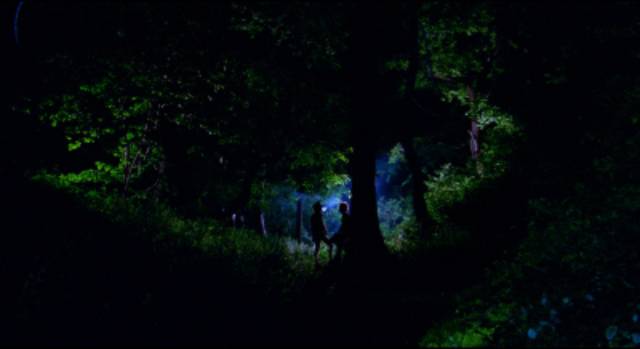
Re-watching these five films in quick succession has reminded me of how significant William Friedkin was at a time when the American movie industry was undergoing major changes between the decline of the big studios and the rise of corporate ownership, a ten-to-fifteen year stretch between the early ’60s and late ’70s when filmmakers were freed up to take chances. If Friedkin somehow, despite some significant commercial and critical success, has a lower profile now than people like Sam Peckinpah and Robert Altman, it may be because his work displays very little interest in pleasing an audience; it’s marked by a cool detachment and frequently an unwillingness to reveal the filmmaker’s own opinion about what’s being shown or to provide a clear narrative resolution. These traits very much belong to the ’70s and although he continued to work for four more decades, his signature films are those made between 1971 and the mid-’80s, including four radically different movies which are all, in their own distinctive ways, masterpieces.
Comments
I really enjoyed your assessment of William Friedkin’s career. I have the HD DVD version of Bug. It’s a foreign import which is still sealed as I never got around to watching it. I need to watch this movie soon! HD DVDs didn’t have regional encoding so it made collecting foreign releases very easy. Again thanks for the in-depth and interesting look at Friedkin’s career. It’s motivated me to finally watch Bug.
It’s been a while since I saw Bug, so I should probably take another look. I really liked it and hope it holds up.